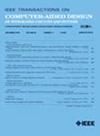潜在 RAGE:使用生成熵模型进行随机性评估
IF 2.7
3区 计算机科学
Q2 COMPUTER SCIENCE, HARDWARE & ARCHITECTURE
IEEE Transactions on Computer-Aided Design of Integrated Circuits and Systems
Pub Date : 2024-11-06
DOI:10.1109/TCAD.2024.3449562
引用次数: 0
摘要
美国国家标准与技术研究所(NIST)最近对广泛使用的特别出版物(SP)800-22 随机性测试套件进行了审查,强调了该测试套件的几个缺点,尤其是缺乏熵源建模以及必须使用大序列长度。受此启发,我们利用变异自动编码器 (VAE) 探索了随机数发生器 (RNG) 中熵源的低维建模。这种低维建模通过放大后者的确定性效应,实现了强熵源和弱熵源的分离。具有偏差、相关性或确定性模式的弱熵 RNG 的比特更有可能位于高维空间中的低维流形上,这与强熵 RNG(如具有均匀分布比特的真 RNG (TRNG) 和伪 RNG (PRNG))形成鲜明对比。我们利用这一洞察力,首次采用了基于生成式人工智能的互不干涉测试(GeNI),实现了对所有类型熵源的低维建模。GeNI 的生成方面使用 VAE 从 RNG 的潜在表示中生成合成比特流,并对其进行基于深度学习(DL)的无干扰(NI)测试,以评估合成比特流的掩蔽能力。NI 测试的核心原则是,如果比特流表现出高质量的随机性,那么来自两个数据源的屏蔽数据应该是无法区分的。GeNI 方便了对各种 RNG 的低维熵源表示进行比较分析,能巧妙地识别出具有确定性模式的伪造 RNG 中的人为随机性,否则这些 RNG 将通过 NIST SP800-22 的所有测试。值得注意的是,与 NIST 测试套件相比,GeNI 的序列长度降低了 10 倍,执行时间缩短了 16.5 倍。本文章由计算机程序翻译,如有差异,请以英文原文为准。
Latent RAGE: Randomness Assessment Using Generative Entropy Models
NIST’s recent review of the widely employed special publication (SP) 800–22 randomness testing suite has underscored several shortcomings, particularly the absence of entropy source modeling and the necessity for large sequence lengths. Motivated by this revelation, we explore low-dimensional modeling of the entropy source in random number generators (RNGs) using a variational autoencoder (VAE). This low-dimensional modeling enables the separation between strong and weak entropy sources by magnifying the deterministic effects in the latter, which are otherwise difficult to detect with conventional testing. Bits from weak-entropy RNGs with bias, correlation, or deterministic patterns are more likely to lie on a low-dimensional manifold within a high-dimensional space, in contrast to strong-entropy RNGs, such as true RNGs (TRNGs) and pseudo-RNGs (PRNGs) with uniformly distributed bits. We exploit this insight to employ a generative AI-based noninterference test (GeNI) for the first time, achieving implementation-agnostic low-dimensional modeling of all types of entropy sources. GeNI’s generative aspect uses VAEs to produce synthetic bitstreams from the latent representation of RNGs, which are subjected to a deep learning (DL)-based noninterference (NI) test evaluating the masking ability of the synthetic bitstreams. The core principle of the NI test is that if the bitstream exhibits high-quality randomness, the masked data from the two sources should be indistinguishable. GeNI facilitates a comparative analysis of low-dimensional entropy source representations across various RNGs, adeptly identifying the artificial randomness in specious RNGs with deterministic patterns that otherwise passes all NIST SP800-22 tests. Notably, GeNI achieves this with
$10\times $
lower-sequence lengths and
$16.5\times $
faster execution time compared to the NIST test suite.
求助全文
通过发布文献求助,成功后即可免费获取论文全文。
去求助
来源期刊
CiteScore
5.60
自引率
13.80%
发文量
500
审稿时长
7 months
期刊介绍:
The purpose of this Transactions is to publish papers of interest to individuals in the area of computer-aided design of integrated circuits and systems composed of analog, digital, mixed-signal, optical, or microwave components. The aids include methods, models, algorithms, and man-machine interfaces for system-level, physical and logical design including: planning, synthesis, partitioning, modeling, simulation, layout, verification, testing, hardware-software co-design and documentation of integrated circuit and system designs of all complexities. Design tools and techniques for evaluating and designing integrated circuits and systems for metrics such as performance, power, reliability, testability, and security are a focus.

 求助内容:
求助内容: 应助结果提醒方式:
应助结果提醒方式:


